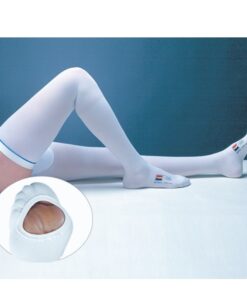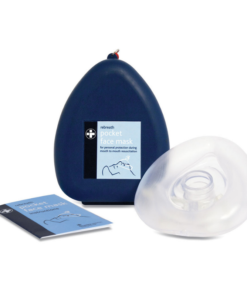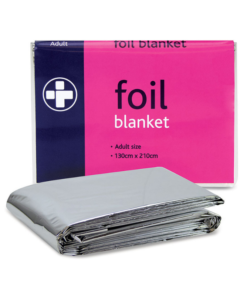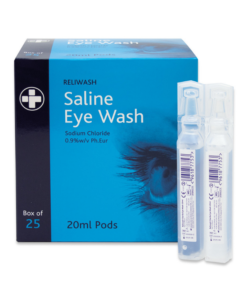Description
T.E.D Covidien Stockings apply the clinically-proven graduated pressure pattern of 18mmHg at the ankle, 14mmHg at the calf, 8mmHg at the popliteal, 10mmHg at the lower thigh and 8mmHg at the upper thigh. It is important to measure the patient’s leg size to assure that the appropriate pressure pattern is applied.
T.E.D Covidien Stockings are clinically proven to reduce the incidence of DVT up to 50% and to promote increased blood flow velocity in the legs 138% of baseline by compression of the deep venous system. They have also been clinically proven to prevent the damaging effects of venous distension that occurs during surgery and hospitalization.
Not all anti-embolism stockings have been clinically shown to provide the same protection as T.E.D Convidien Stockings, which are recognizable by the T.E.D. logo clearly visible on the foot.
The T.E.D Covidien Stockings Size H fit thigh size <25” (63.5cm), calf size 12 – 15” (30.5 – 38cm) and the length is 29 – 33cm” (74 – 84cm). These are thigh length stockings.
Uses
Deep Vein Thrombosis (DVT for short) is the name given to blood clots that can form in the veins of your leg following surgery or long periods of bed rest in the hospital, among other reasons. If the clot becomes loose, it can break away and travel through the veins to the heart and lungs and may block a major blood vessel. This is known as a Pulmonary Embolism or PE. Pulmonary Embolism is a serious condition which in some cases may be fatal.
There are three major factors that may cause a DVT to form:
- When you lie or sit in the same place for a long period of time, the speed that blood flows through the legs becomes slower. If blood flows slower, it may cause it to clot.
- Inactivity, the effects of certain drugs, muscle relaxants or anaesthetics can cause the veins to become wider and tear. Blood clots are more likely to adhere to the tears in the wall of the vein.
- Changes can occur in the way your blood clots. Certain medications and inactivity may change your blood’s normal coagulation process, leading to blood clots. DVT is recognized as a major health risk in hospitals around the world, so you may be required to wear high quality, clinically-proven T.E.D Convidien Stockings to help prevent this from happening.
The T.E.D Covidien Stockings helps prevent formation of Deep Vein Thrombosis, and promotes increased blood flow velocity in the legs by compression of the deep venous system.
The T.E.D Covidien Stockings also helps reduce the threat of blood clots forming in your legs. Blood clots can form in anyone, but the threat of their formation is much greater during a hospital stay. T.E.D. anti-embolism stockings improve blood circulation in the leg veins by applying graduated compression.
Application
Insert your hand into the stocking as far as the heel pocket.
Grasp the centre of the heel pocket and turn the stocking inside out tothe heel area.
Carefully position the stocking over your foot and heel. Be sure that the heel is cantered in the heel pocket.
Begin pulling the body of the stocking up around the ankle and the calf. The stitch change (change in fabric sheerness) should fall between one to two inches below the bend of the knee.
As the thigh portion of the stocking is applied, start rotating the stocking inward so the gusset is centred over the femoral vein. The gusset is placed slightly towards the inside of the leg and the top band should rest in the gluteal fold (the line at the bottom of the buttocks). Smooth out any excess material keeping stitch change and gusset in place. Pull the toe section forward to smooth the ankle and instep to allow for toe comfort.






